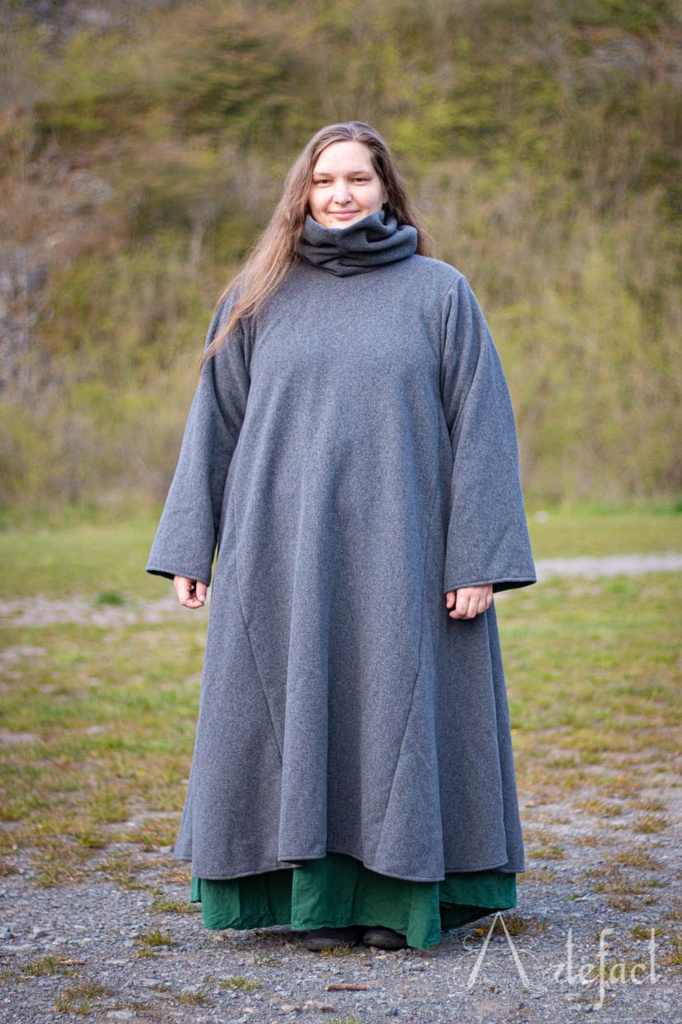Travel surcoat
This surcoat, sometimes called "garde corps", is a mixed garment from the 13th and early 14th centuries. It was worn as a final layer, over a cotte.
There are several types of travel surcoat, notably liturgical ones, but here we are talking about the secular surcoat, called "rain cape" in medieval texts.
It is represented in all social circles, more often worn by men than women, and often worn in travel situation.
The sleeves can have several shapes:
- long, straight, wide sleeves
- organ-pipe sleeves, referring to a multitude of folds at the base of the sleeve (the more folds, the richer the status)
- short sleeves ending at the elbow, very flaredMany sleeves have an opening, either through a slit along the sleeve or through an opening in the armpit.
This surcoat can be more or less long (from the knee to the ankles), and slit at the front or back for riding.
Sources:
- Psalter, imperfect, Netherlands, 2nd quarter of the 13th century
-La Somme le Roi, f. 136v (1295), f. 136v (1295)
Possible options:
- Exposed handmade seams
- With or without lining
- Different types of sleeves
- Material of the lining: linen, fur, silk
- With or without hood
Price: from €213







